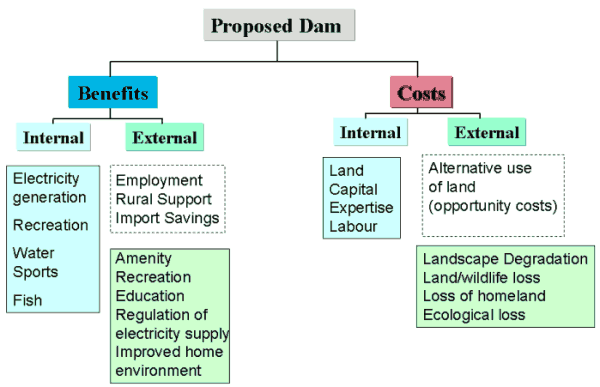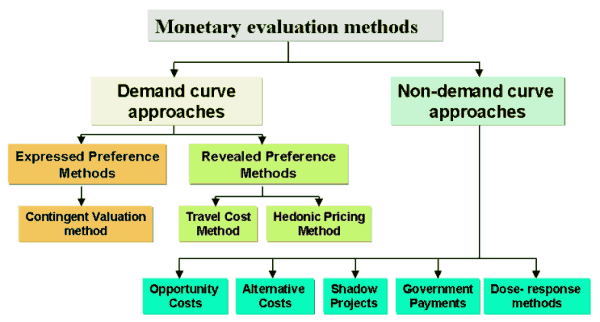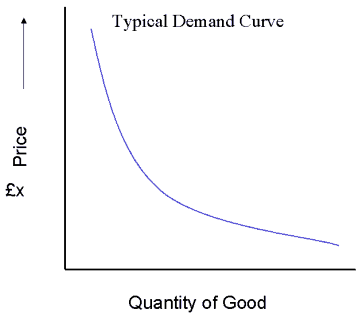| Green Economics - The basics |
|
Project Appraisal |
|
Figure 4 indicates some of the topics to consider in a project appraisal for the construction of a dam to provide hydroelectric power. It shows those environmental/social services not traditionally costed (green) as well as those costs that can be estimated directly from current market data (blue) and/or by reference to markets (dotted line). Figure 4 |
 |
|
The non-market impacts may be priced via the monetary evaluation methods indicated in Figure 5 where feasible. Note the different approaches for value and price. If the disparity between these seems likely to be large then the demand curve approach is considered to be most useful. Disparity occurs if the price charged for the good is very low yet the "intrinsic value" or the value that people place on the good is very high. For example in the case of clean water, the price for access to water in the UK is very low yet people would pay almost any amount to ensure a basic supply.
Figure 5 |
 |
| Economic theory calculates value through the demand for a given "good" or service, figure 6 indicates a typical "demand curve", the area under the curve indicates the value of the food or service and works for both marketed and non-marketed goods. |

|
(Expressed Preference) |
| Information about value can be gained by directly asking people their opinion this is known as Expressed Preference. | |
| (Revealed Preference) | |
| Or, value can be inferred by investigating the costs that individuals are willing to accept indirectly to obtain the service, e.g. petrol bought to travel to a beauty spot this is known as Revealed Preference. | |
| Figure 6. |
| Task 4 choose a service you currently obtain free of charge this can be a marketed good such as a free community newspaper or a non-marketed good such as access to a local park or beauty spot. How much would you be willing to pay (WTP) for this amenity? Construct a demand curve to try to identify the value of the amenity by asking locals, family, friends and work colleagues. The quantity of goods can be equated with number of visits or number or newspapers. The price with the amount that people are willing to pay for one visit, two visits three visits and so on or one newspaper per week, two, three and so on. For example people might be willing to pay more for their first visit but expect to pay less if they visit regularly. Since the marketed value is zero i.e. this is a free service, the sum of all the values you obtain will provide you with a value for the service or good. Taking into consideration the number of people you have asked this kind of evaluation could then be annualised and calculated for a % of the population in a particular region to support local authority policy decision making. |